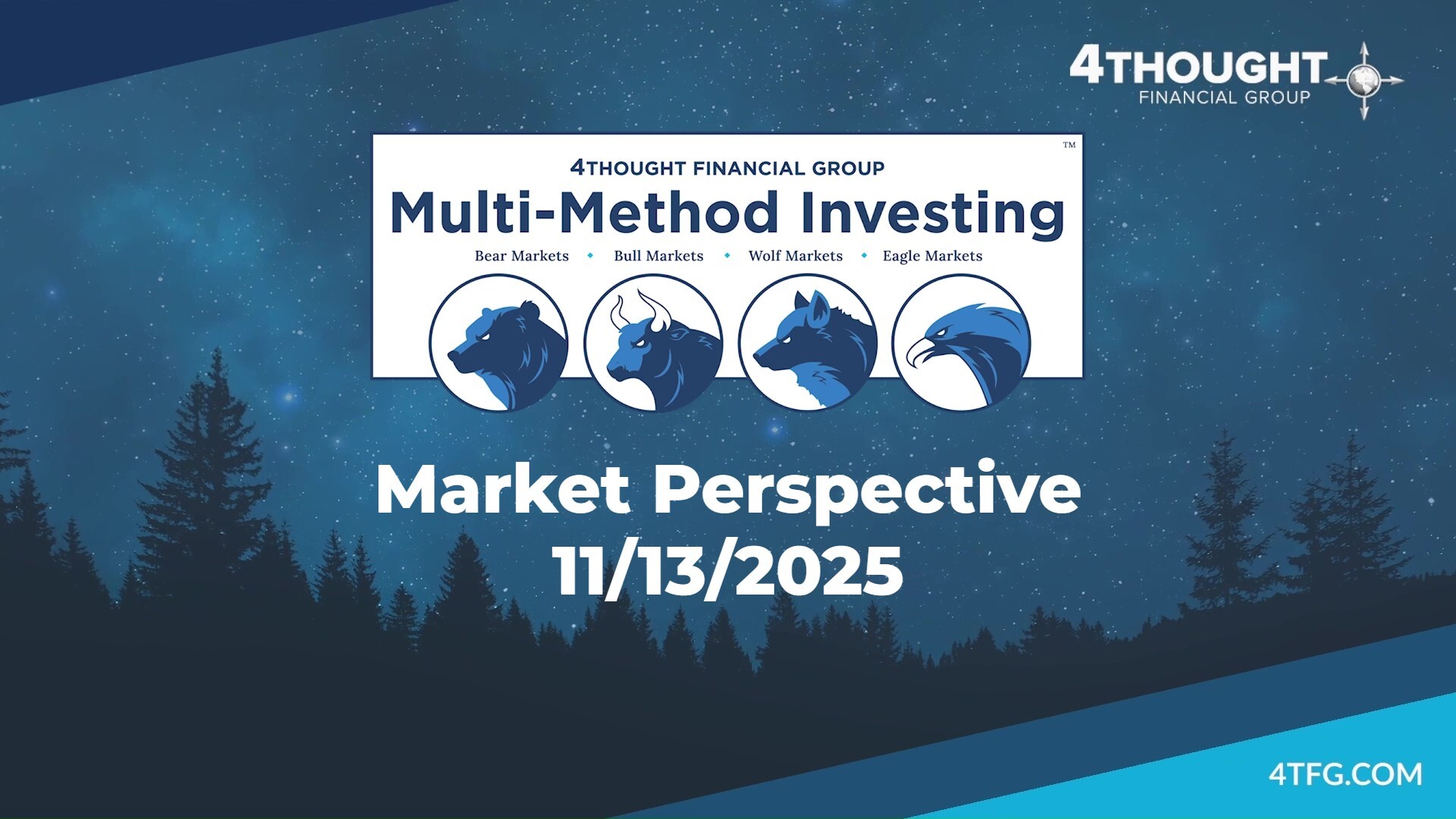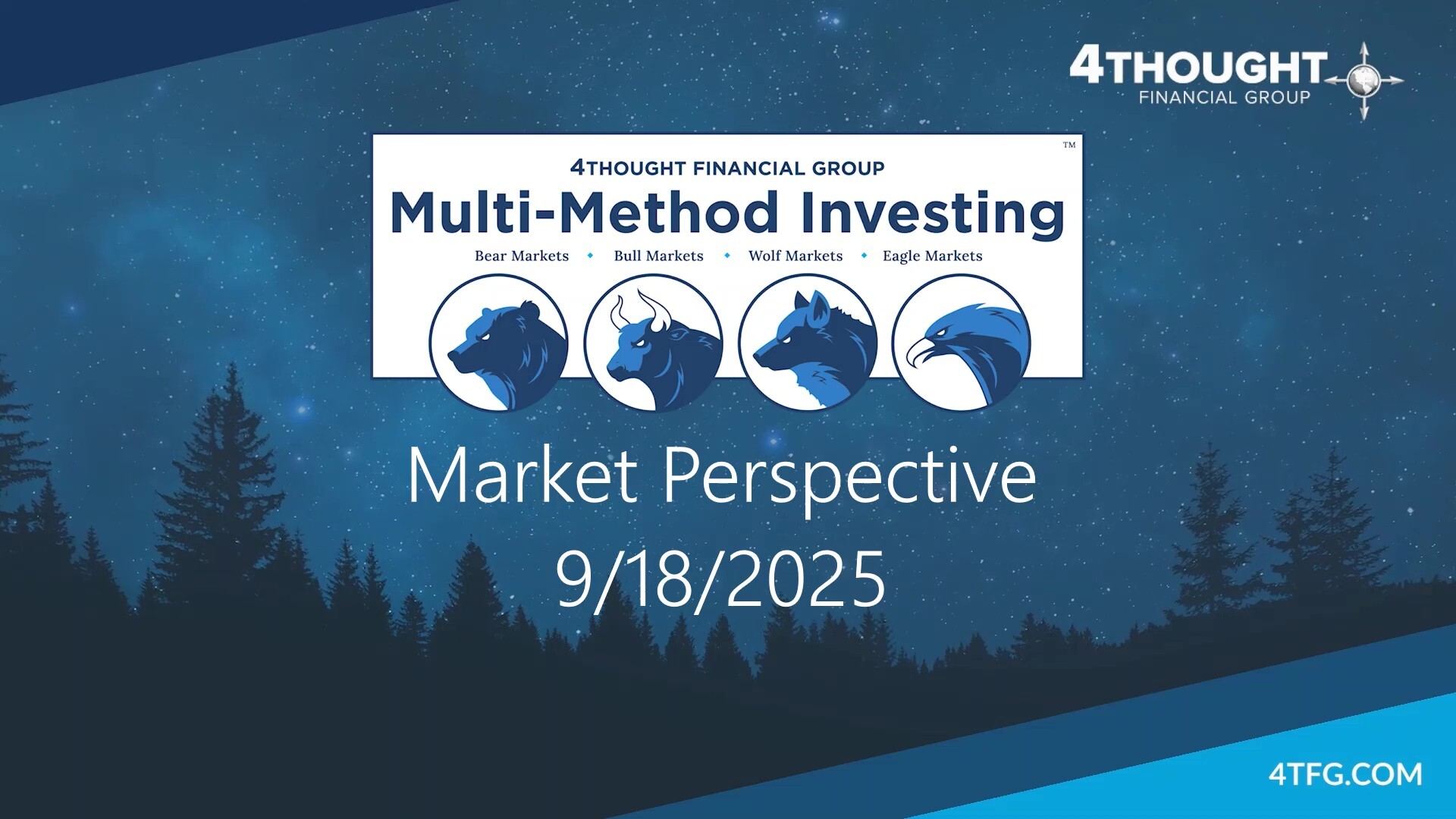4Thought provides actionable investment analysis and perspective on the financial markets to you on a weekly basis.
Contact us to determine whether any ideas presented are applicable to your situation before taking any actions with regards to your financial plan or investment portfolio.
Hear from Chief Investment Officer Jesse Mackey in this week's Market Perspective.
Video Transcript
I’m Jesse Mackey, CIO of 4Thought Financial Group, and this is 4Thought’s Market Perspective as of January 19th, 2021.
Stocks have started 2021 with a pattern that diverges from last year, with US large cap stocks underperforming most other stock types so far. Looking back, global stocks went on a rollercoaster ride in 2020, experiencing both a bear market (with a corresponding recovery) and a 10%+ correction (with a corresponding recovery), but still ended the year with substantial gains. One of the best performing stock indexes, the S&P 500 Index of US large cap stocks, closed out the year with gains of 18.40%. Some other stock type indices, while not quite as impressive in their results, were also able to achieve double-digit returns.
Back on November 9th, the S&P 500 Index of US large cap stocks had fully recovered from its September 10.55% downward correction, and had achieved a new record price. It has notched additional gains of about 3.35% since then, as of the close of business on Friday. We like to refer to the combination of a correction and its corresponding recovery (like the one recently experienced) as a Wolf Market. Prior to this, the rapid recovery from the 2020 Bear Market low point on March 23rd (at which point the S&P 500 had dropped more than 34% from its previous peak) met our technical definition of a new Bull Market.
Historical data indicates that once a new Bull Market has been confirmed (which happened on August 18th), the shortest time period on record (since 1950) before the beginning of another Bear Market was approximately 4.4 months, and the longest time on record was approximately 10.7 years, with the average coming in at about 3.2 years. Approximately 5.1 months have elapsed from the point of Bull confirmation in this instance so far. We also note that there has usually been at least one 10%+ correction (but often several) between most bear markets in history. The first correction and full recovery in this bull market was completed about 10 weeks ago. Historical data further tells us that 75% percent of Wolf Markets like the one we recently experienced have been followed by a period that exhibits trailing 1-year returns of 30% or greater (something we refer to as an Eagle Market). The other 25% percent of the time we return to a plain old bull market (at least for a short time period). One can think of Eagle and Wolf Markets as subsets or smaller components of the broader traditional bull market. Either way, scenarios like our current one have historically been mostly positive for stocks in the short to intermediate term.
However, from a probabilistic analysis perspective, stock types range from near fair value (such as with international developed markets stocks) to moderately overvalued (in the case of large cap growth stocks). Bond types range from near fair value (in the case of emerging markets bonds) to slightly overvalued (in the case of Treasury Inflation Protected Securities). Against this backdrop the outlook for stocks is now neutral to slightly positive in the intermediate term based on the overall aggregate of our historical market-type data analysis and quantitative probabilistic analysis.
After the first few weeks of trading in 2021, US small cap stocks are the best performers so far, while US aggregate bonds show the worst year-to-date performance. Emerging markets bonds now reflect the most attractive pricing relative to the alternatives, while US large cap growth and tech stocks are the least attractive. With regards to allocations amongst investment methods, we are now allowing overweight allocations to Selective/Concentrated Investing, neutral allocations to Strategic Asset Allocation, and underweights to Liability-Driven Investing and Opportunistic Investing.
I hope this was helpful. If you have questions or you’d like to discuss what this means for your particular situation, please contact 4Thought at 516-300-1617 or at info@4tfg.com – and don’t forget to subscribe to our blog feed and our YouTube channel. Thanks for watching, and see you next week






Leave a Comment